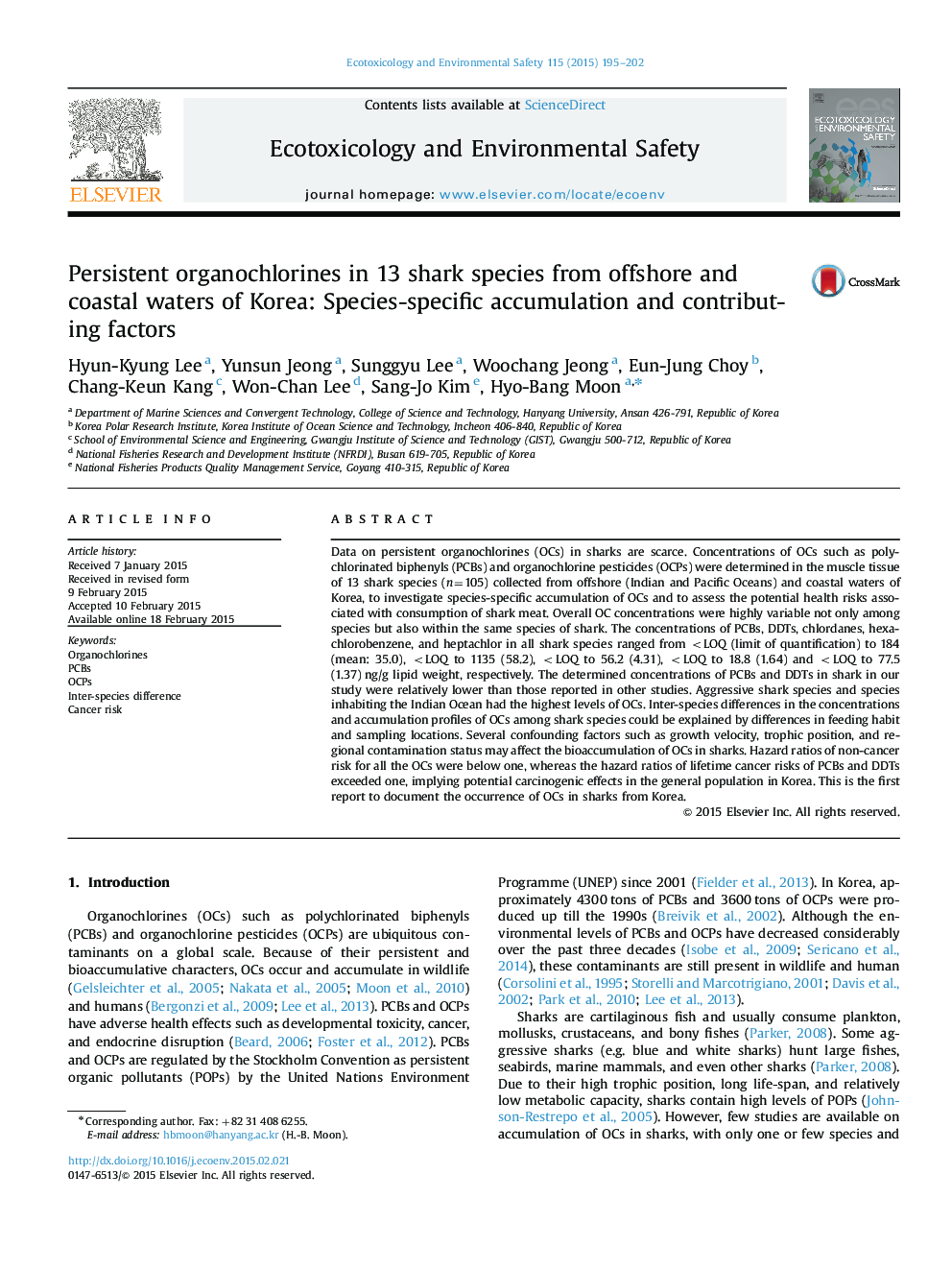| Article ID | Journal | Published Year | Pages | File Type |
|---|---|---|---|---|
| 4419752 | Ecotoxicology and Environmental Safety | 2015 | 8 Pages |
•Organochlorines (OCs) were determined in 13 shark species.•Highest levels of OCs were found for aggressive carnivore sharks.•Feeding habits and locations were major contributors for OC accumulation.•Lifetime cancer risks of PCBs and DDTs were greater than unity for Korean population.
Data on persistent organochlorines (OCs) in sharks are scarce. Concentrations of OCs such as polychlorinated biphenyls (PCBs) and organochlorine pesticides (OCPs) were determined in the muscle tissue of 13 shark species (n=105) collected from offshore (Indian and Pacific Oceans) and coastal waters of Korea, to investigate species-specific accumulation of OCs and to assess the potential health risks associated with consumption of shark meat. Overall OC concentrations were highly variable not only among species but also within the same species of shark. The concentrations of PCBs, DDTs, chlordanes, hexachlorobenzene, and heptachlor in all shark species ranged from
